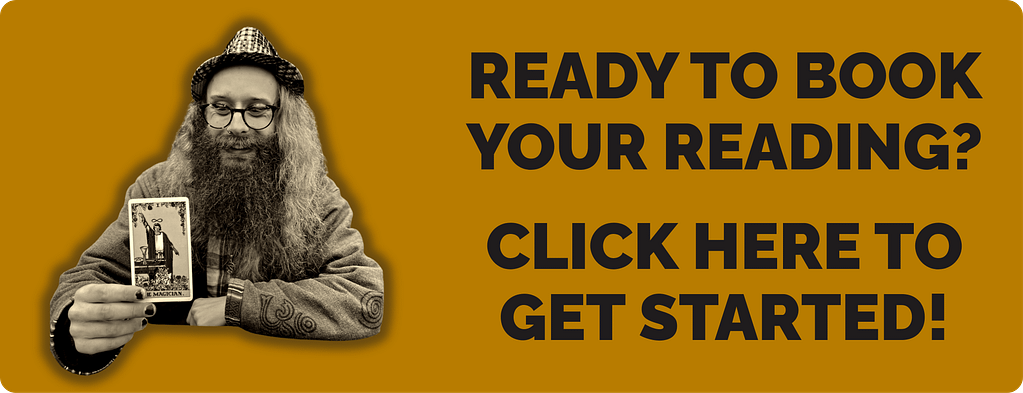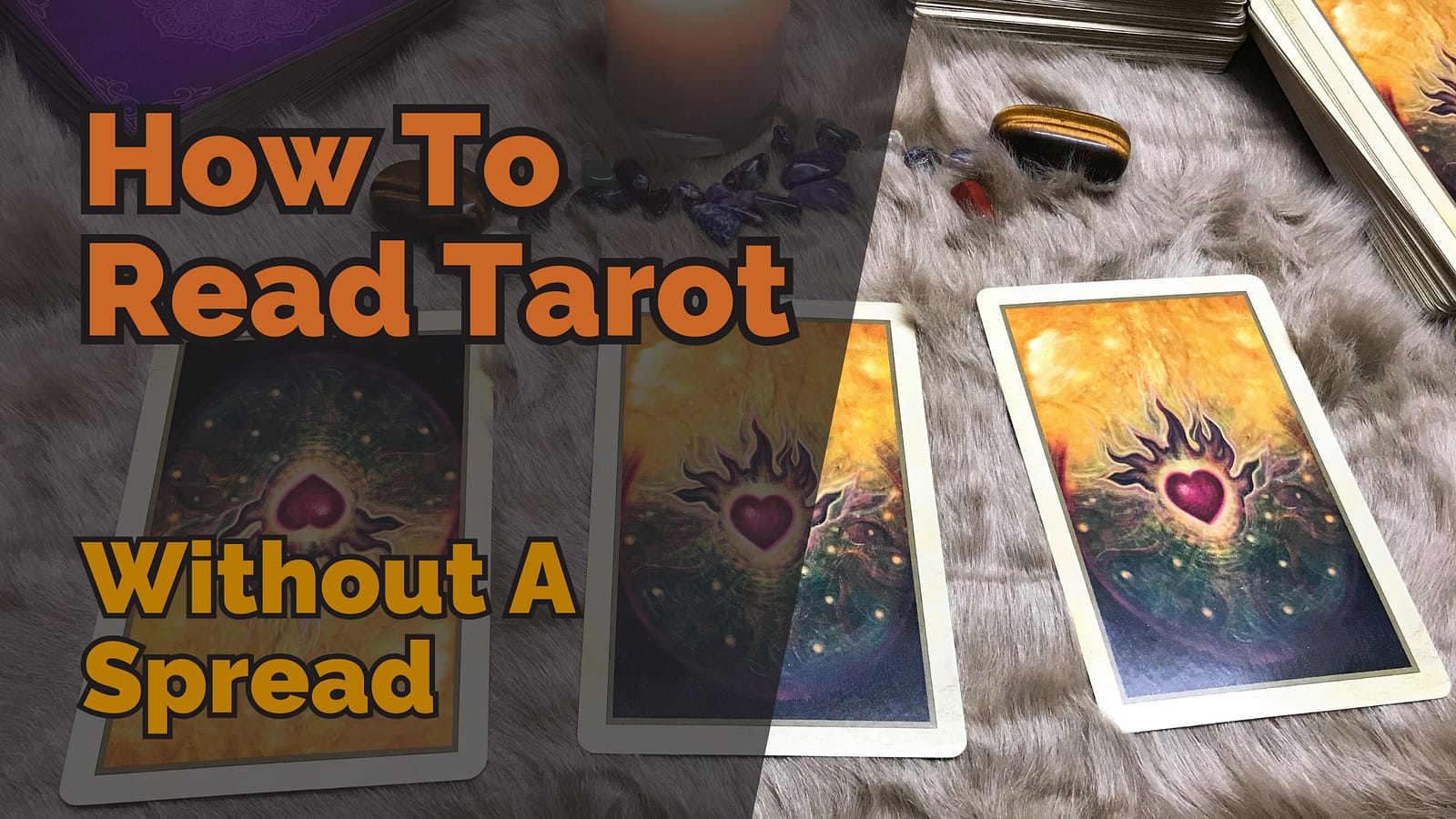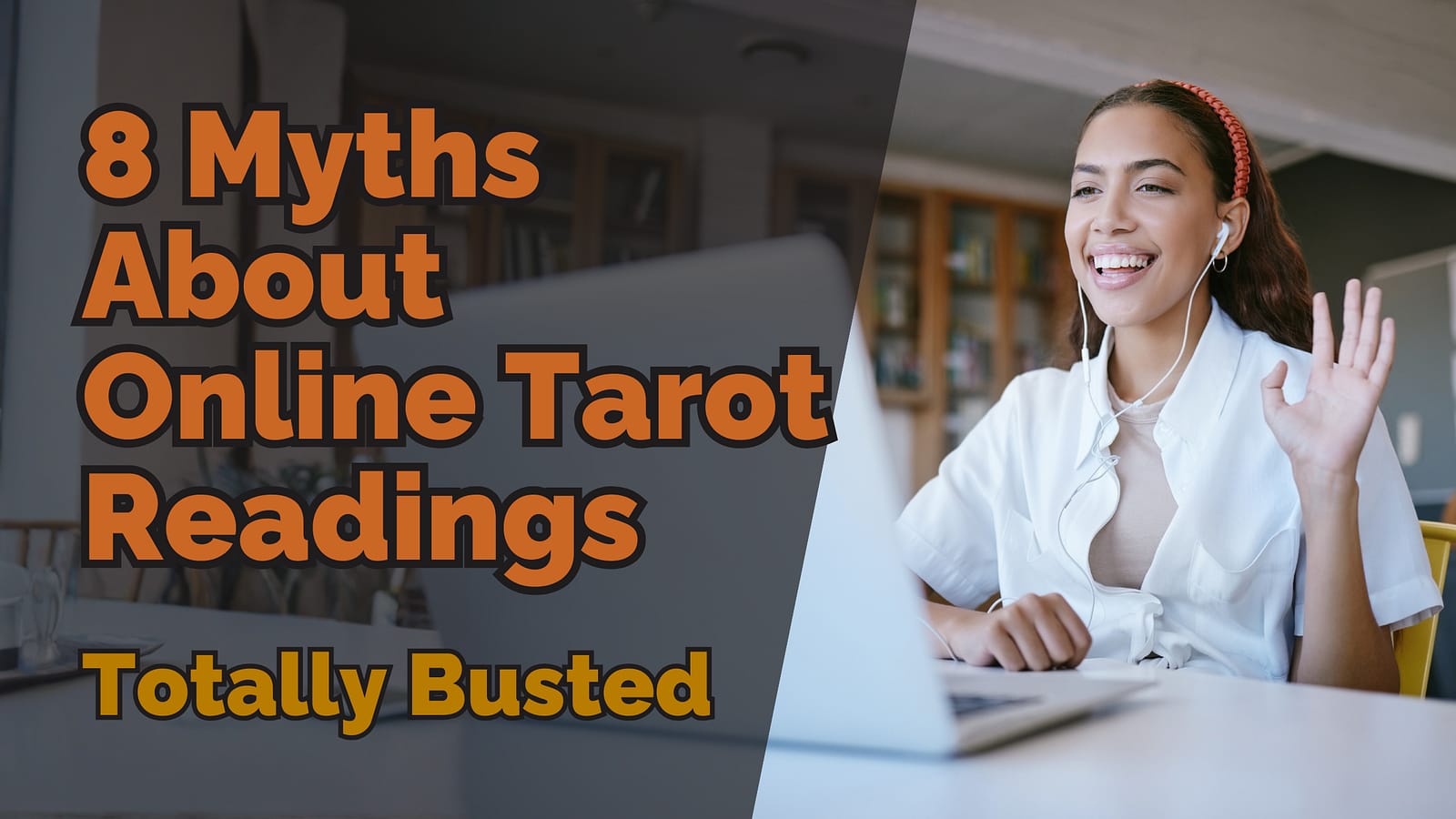
Table of Contents
I never thought I’d stop calling myself a Christian. After years spent immersed in prayer ministry, speaking in tongues, and feeling the Holy Spirit move through me, leaving the church felt impossible. My connection to what I called the Holy Spirit was deep—it wasn’t just about attending services. It was my everyday life. I prayed for people to be healed, to find peace, and to receive clarity, and I truly believed I was channelling something divine.
But as I deconstructed my faith, I found myself facing a question I didn’t expect: What do I do with all those experiences? The words of knowledge, the answers to prayers—were they real? And if so, where were they coming from now that I no longer identified with the Christian faith?
What I didn’t expect was to find those same feelings of divine guidance through a tool I’d been taught to fear: tarot. For years, I’d been told that tarot was dangerous, demonic even, but once I started exploring it, I was shocked to feel the same energy I once attributed to the Holy Spirit. That same clarity, that same sense of peace and knowing—it hadn’t disappeared when I left the church. It was still there, but now I was accessing it through a completely different practice.
Tarot has become a key part of my spiritual practice, and I now understand that the energy I once called the Holy Spirit is still very much present, just in a new form. Here are five transformative ways the Holy Spirit and intuition align through tarot readings and how this tool has helped me navigate my evolving spiritual path.
1. How Prayer Helped Me Connect to the Holy Spirit and Intuition
In the church, prayer was everything to me. It wasn’t just a routine or something I did out of obligation—it was my tool for slowing down, processing my thoughts, and finding clarity. Whether I was in the middle of a busy week or feeling overwhelmed by life’s uncertainties, prayer became the space where I could reflect, ask for guidance, and make sense of everything going on. For me, prayer wasn’t just about talking to God; it was about listening, too. In many ways, it functioned like journaling or mantras do for others, helping me tap into something deeper.
During my time in the church, I found this sense of connection particularly strong in the 24-7 prayer room. I would reserve an hour or two, just to be alone with my thoughts, to meditate, reflect, and listen. I would pray for clarity, for answers to questions, and most importantly, for guidance. And it came, often in the form of what I called at the time the Holy Spirit. This sense of calm, of knowing, would wash over me, and I would leave those sessions with a much clearer picture of what I needed to do next.
What I didn’t realise then, but see clearly now, is that much of what I attributed to the Holy Spirit was actually my intuition coming through. Prayer helped me silence the noise, switch off my thinking brain, and tune into what I was really feeling. It was a tool for connecting to my inner guidance, even if I didn’t recognise it as such at the time.
Now, when I sit down with tarot cards, that same sense of clarity and guidance is present. The ritual of shuffling the deck, setting an intention, and reflecting on the cards is much like the quiet, focused moments I used to spend in prayer. Both practices—whether praying or pulling cards—help me access that same intuitive guidance, though I now recognise it as coming from within rather than from an external divine source.
2. Overcoming Scepticism: Letting Tarot Reveal My Intuition
When tarot first entered my life, it came with a heavy dose of scepticism. Growing up in the church, I’d been taught that tarot was dangerous, even demonic. It was one of those things you just didn’t mess with—it was associated with the occult and everything we were warned against. So when a friend suggested I try tarot, my immediate reaction was hesitation. There was a little voice in my head that echoed all those warnings, all that fear.
But curiosity got the better of me. What if tarot wasn’t what I’d been taught to believe? What if, like so many other things I had deconstructed in my faith, it had been misunderstood? I decided to approach tarot cautiously. I wanted to see for myself if there was any truth to the warnings or if I had been fed misinformation.
The first time I picked up a tarot deck, I had no idea what I was doing. I shuffled the cards, laid them out, and stared at them, not knowing how to interpret the images. But then something surprising happened. As I began to engage with the cards, I felt a sense of familiarity. It was that same feeling of connection, that same intuitive nudge I used to feel during prayer ministry. The clarity that washed over me as I looked at the cards was the same as the clarity I’d felt when I used to pray for guidance.
That’s when it hit me—this wasn’t demonic. It wasn’t dark. In fact, it felt exactly like the divine connection I had experienced in the church. The energy I had once called the Holy Spirit was still very much present, but this time, it was coming through tarot. The cards weren’t predicting the future; they were helping me connect to the intuition that had always been there, the same way prayer once did.
Letting go of that initial fear and scepticism wasn’t easy. It took time, and I had to remind myself that it was okay to explore new spiritual tools. The shift from seeing tarot as something dangerous to viewing it as a way to access my intuition was profound. Once I overcame that hesitation, I began to see tarot as a tool for deepening my spiritual connection, not something that threatened it.
3. How Learning Tarot Strengthened My Connection to Intuition
As I began to explore tarot more deeply, I quickly realised that I needed some guidance. The cards were powerful, but I wanted to understand them on a deeper level—to know how to read them not just for myself, but for others too. That’s when I came across Kevin Garcia and their course, Tarot’s Cool. Kevin is a non-binary spiritual coach and mystical theologian, and their approach to tarot was unlike anything I’d encountered. They didn’t treat tarot as some mystical tool for fortune-telling but rather as a way to tap into divine energy and intuition.
I signed up for Kevin’s course, even though the time difference meant I’d be joining late-night Zoom sessions from bed. Despite the odd hours, the course was exactly what I needed. Kevin taught tarot in a way that felt accessible, intuitive, and deeply spiritual. It wasn’t about memorising card meanings or rigid interpretations—it was about learning to trust my intuition and use the cards as a guide. Tarot, as Kevin taught, is a tool to amplify what’s already inside of us.
The more I learned, the more I realised how tarot and the Holy Spirit and intuition were intertwined. Kevin’s teachings helped me see that the energy I once connected to through prayer could also come through the cards. The themes, archetypes, and symbols in tarot were just another way of receiving messages from my intuition, much like how prayer used to work for me.
I started doing readings for myself and others, and with every reading, I felt more connected to that same divine energy I once felt in church. The cards became a language I could use to communicate with my intuition, and that intuitive connection felt just as strong, if not stronger, than it had during my years in prayer ministry.
One of the most profound realisations I had during Kevin’s course was that tarot isn’t about predicting the future—it’s about guiding us toward the answers we already have inside. Kevin often said that tarot is like a mirror, reflecting what we already know but might not be able to see. That’s how I used to approach prayer, asking for guidance and clarity. Tarot has simply become another way to access that same inner knowing, to tap into the divine energy that’s always been there.
4. Reconnecting with Intuition Through Spiritual Retreat Practices
Before tarot became a central part of my spiritual practice, I had already started reconnecting with my intuition during a transformative retreat at AtelTrainer. This retreat was all about aligning body, mind, and spirit, far removed from any traditional religious framework. Instead, it focused on techniques like Tai Chi, yoga, and transcendental meditation, which were all aimed at stripping back external distractions and helping me reconnect with my core essence.
One of the most profound tools I used at the retreat was a pendulum, which helped me tap into my intuition for yes/no answers. It was an introduction to how subtle and powerful our inner guidance can be. However, that wasn’t the only way I connected to my intuition. Practices like Tai Chi and yoga played a significant role in helping me ground my energy, aligning my physical body with the intuitive guidance coming through. These movements allowed me to quiet my mind, tune into my body’s signals, and feel more connected to the present moment, which in turn deepened my intuitive awareness.
The transcendental meditation sessions we practiced at the retreat took this connection even further. These weren’t about emptying the mind but rather about reaching a place where the body, mind, and spirit were united. Through these meditations, I learned how to transcend my usual thought patterns and connect more directly with the universal energy that the retreat called “the Source.” This energy, which I now see as being the same force I once called the Holy Spirit, was all around me, guiding me, and available to me if I slowed down and tuned in.
When I later incorporated tarot into my practice, it felt like an extension of what I had learned at the retreat. Tarot gave me a more complex language to engage with my intuition, building on the yes/no answers I got from the pendulum and the embodied connection I felt through Tai Chi and yoga. Each tarot card spread felt like a deeper conversation with my inner guidance, mirroring the clarity I had found during those moments of stillness and movement at AtelTrainer.
5. Tarot as a Map: Creating the Future with Intuition
One of the biggest misconceptions about tarot is that it’s about predicting the future. When I first started exploring tarot, I quickly realised that this wasn’t the case. Tarot doesn’t tell you exactly what will happen; instead, it shows you the energies and pathways available, leaving the choice of what to do with that information up to you. Much like the practices I learned at AtelTrainer, tarot is a tool for co-creating your future, not for handing over control to fate.
At the retreat, we focused on aligning our body, mind, and spirit to be fully present in the moment. Through practices like Tai Chi and transcendental meditation, I learned how to connect deeply with the present, rather than worrying about future outcomes. These practices taught me that the future is not fixed—it’s something we actively shape based on the energies we engage with right now. The same goes for tarot. Each card in a tarot spread offers insight into the current situation, the energies surrounding it, and the potential paths that lie ahead. But it’s up to us to decide which path to walk.
I’ve come to see tarot as a map, much like how meditation and movement practices act as guides. Tai Chi, for example, showed me the flow of energy within my body and how that energy could be harnessed and directed. Similarly, tarot spreads show the flow of energy in a situation, offering a glimpse into the different possibilities based on how we choose to engage with that energy.
One of the most empowering aspects of tarot is that it puts the responsibility in your hands. It doesn’t lock you into a predetermined fate. Instead, it reveals the options, the potential pathways, and it’s up to you to choose which direction to take. This aligns with how I used to approach prayer in the church. I would pray for guidance, not for answers. I’d ask for clarity, not certainty. Tarot works in much the same way—it offers the clarity to help you navigate, but you are the one who must take the steps.
What I’ve come to realise is that the universe or Holy Spirit or intuition or whatever we call it guide us, whether through prayer, meditation, or tarot. The divine energy that once flowed through my prayer life now flows through my tarot practice. Tarot doesn’t predict the future; it helps me create it, step by step, choice by choice, action by action.
Conclusion: The Same Energy, Just a New Tool
The more I’ve explored different spiritual practices, the more I’ve come to understand that the energy I once called the Holy Spirit is still very much alive in my life. Whether I’m pulling tarot cards, practicing Tai Chi, or meditating, that same sense of guidance and connection is there. The tools I use to access it may have changed, but the essence of that connection remains the same.
Tarot has become a way for me to tap into my intuition, to co-create my future, and to stay aligned with the energies around me. It’s not about predicting outcomes—it’s about showing me what’s possible and empowering me to take action. For anyone feeling lost or looking for clarity, I encourage you to explore tarot. You might be surprised by what you discover.





